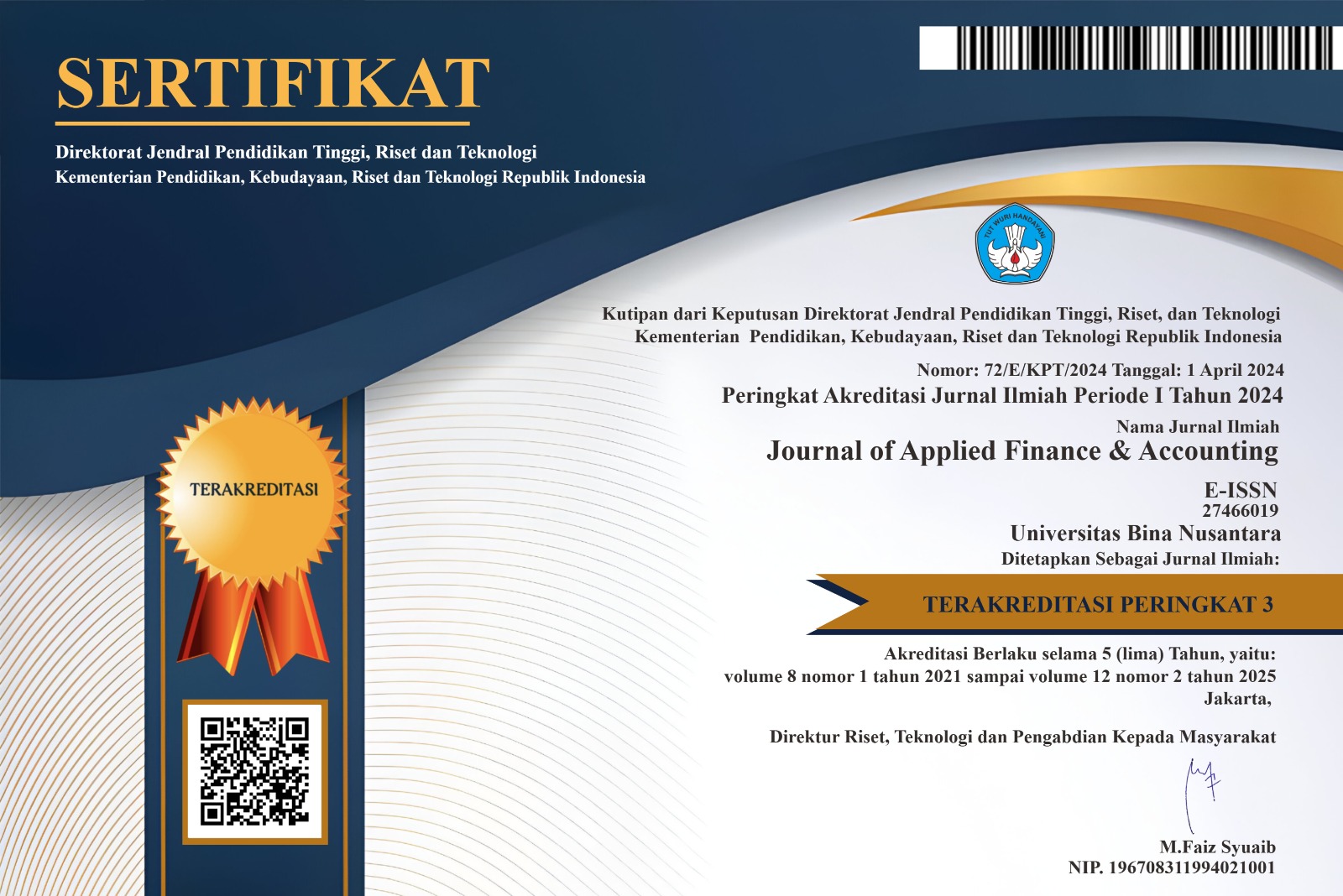STUDY OF GOOD CORPORATE GOVERNANCE IMPLEMENTATION IN LISTED STATE-OWNED ENTERPRISES THROUGH A CONTENT ANALYSIS METHOD OF ANNUAL REPORTS
DOI:
https://doi.org/10.21512/jafa.v3i1.161Keywords:
good corporate governance, assessment, Indonesian state-owned enterprise.Abstract
Good Corporate Governance (GCG) is a concept of directing and controlling business corporations. This concept specifies the distribution of rights and obligations between the company’s stakeholders and the procedures for taking decisions on corporate affairs. It provides a mechanism through which the company’s objectives are set, and for attaining those objectives and monitoring performance. The main objective of this study is to explore how far the GCG principles have been implemented in listed State-Owned Enterprises (SOE). In addition, the writer compares the GCG implementation among the participant companies as well as across the industries, in which the companies are classified. The method used in the data collection is observation through the company’s annual report (content analysis). The writer uses GCG Evaluation Manual of Badan Pengawasan Keuangan dan Pembangunan (BPKP) released and endorsed in 2004 by the Ministry of SOE, as the scoring system. The results generated from this study are the company’s scores in implementing the GCG principles. In addition, the writer generates ranking among the participant companies, within the same industry and across the industries. The best company with the highest score in implementing the GCG principles among the participant companies is Aneka Tambang. In addition, the top companies with the highest scores within each industry are Bank BNI (Finance), Indofarma (Consumption Goods), Telkom (Infrastructure, Utility & Transportation), and Aneka Tambang (Mining). Moreover, the best industry with the highest average score of the players is Property & Real Estate.
Downloads
Published
Issue
Section
License
Authors who publish with this journal agree to the following terms:
Authors retain copyright and grant the journal right of first publication with the work simultaneously licensed under a Creative Commons Attribution License that allows others to share the work with an acknowledgement of the work's authorship and initial publication in this journal.
Authors are able to enter into separate, additional contractual arrangements for the non-exclusive distribution of the journal's published version of the work (e.g., post it to an institutional repository or publish it in a book), with an acknowledgement of its initial publication in this journal.
Authors are permitted and encouraged to post their work online (e.g., in institutional repositories or on their website) prior to and during the submission process, as it can lead to productive exchanges, as well as earlier and greater citation of published work (See The Effect of Open Access).




